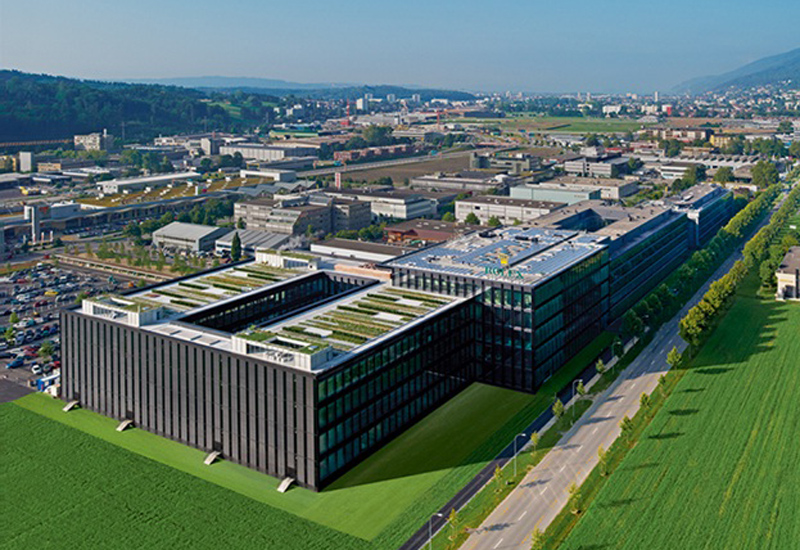Rolex has finally completed its new production building in Bienne, Switzerland, after a decade-long project.
The completed manufactory now covers the equivalent of 13 football pitches and features a high-tech automated stock and component retrieval system that uses robots to pick items from shelves.
Rolex said it now has “complete control” over the manufacturing of the essential components of its watches, including the cases, movements, dials and bracelets.
The new building has brought together four Rolex sites that existed across Bienne and Geneva and is part of a “visionary strategic decision” taken by Rolex to integrate the various manufacturing stages of its watch making.
Formerly the movements were manufactured in Bienne, while Rolex’s R&D, design, communication, sales and after-sales services were based in Geneva.
The final assembly of the watches from components, the development and manufacture of its cases and bracelets and dials, as well as jewellery and gem-setting activities also took place across sites in Geneva.
The brand has now located its manufacturing across seven buildings in the Champs-de-Boujean area on the outskirts of Bienne, most of them separate from each other, having acquired additional land from the city of Bienne in 2006.
It had said that by bringing together its operations, it is “optimizing and further developing its production strength”.
Rolex has grouped two existing units with a volume of 170,000sqm together with a new building of 230,000sqm. This has created a production facility of 400,000sqm, covering the equivalent of 13 football pitches. The supersize space brings together Rolex’s machining, stamping, thermal and surface treatments, maintenance and laboratory activities, as well as the assembly operations required to manufacture its movements.
The new building has four storeys above ground and three floors below that house a striking, entirely automatic stocking and retrieval system that ensures timely delivery of components and finished products to its workshops.
The new automated system will save time in the production flow of the movements, and also offers improved stock management. It is also said to be “unparalleled” in its security and damage prevention of components.
The automated storage space consists of 14 aisles of shelves which can store tens of millions of components. Each aisle is served by conveyor robots 14 in all which pick up from the shelves the required trays and automatically place them on the distribution conveyors which go to the various working areas.
The system is also entirely computerised, with a routing system coordinating 60 programmable controllers, which manage the tray movements under way and guide the trays between the stock area and the workshops. The whole installation is said to be “continuously overseen, 24 hours a day, by an extremely high-performance software program”.

